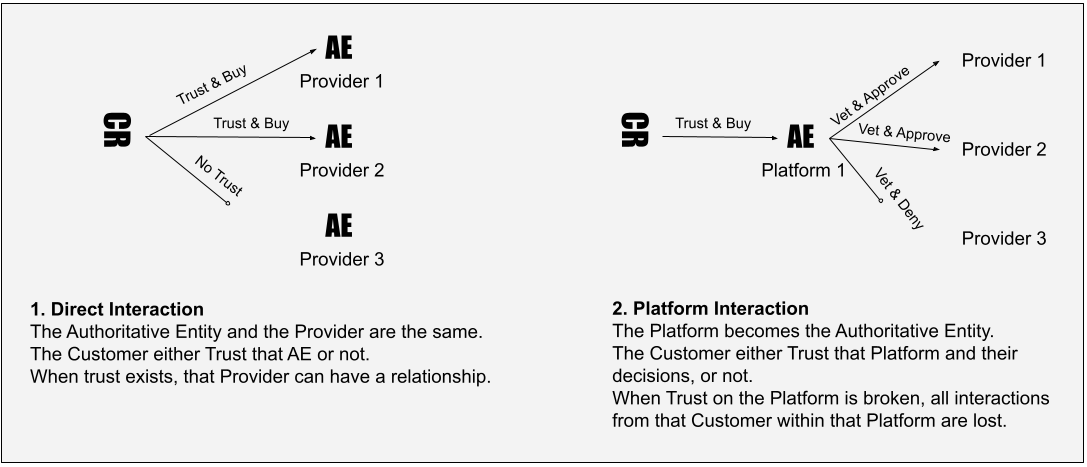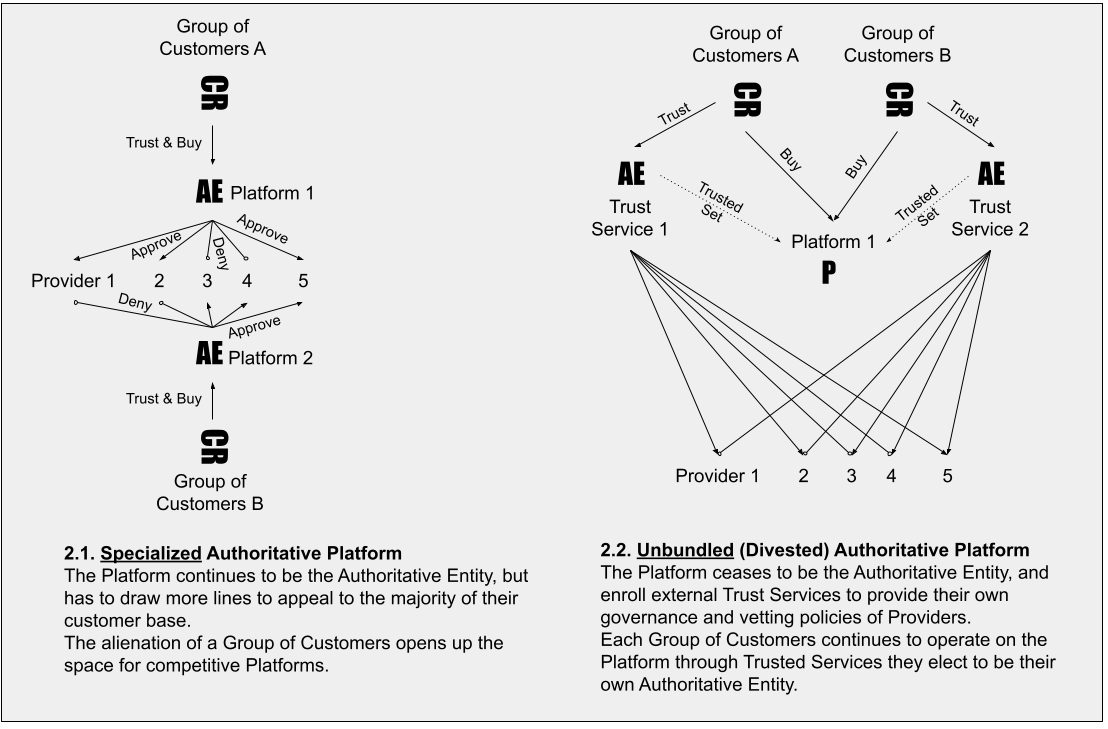Truth-Market Fit: the unbundling of Trust from Platforms
[Note: This article was originally published on LinkedIn on September 2nd, 2021.]
The diversity in values, beliefs and cultural world-views has always been acknowledged and often celebrated. Spread around geographically and throughout different social groups, those differences naturally thrived around their microcosms of interactions.

Within each of those microcosms, specific authoritative entities are recognized - either organically or imposed - as sources of truth and have been able to gain or maintain the trust of that population by providing guidance aligned with the views of the population under their trust influence.
As technology accelerates the connection and reduces the distance between all of these diverse groups, the resulting clash of opposing trusted guidance becomes constant and more prominent. The integration doesn’t necessarily drive amalgamation and, as a result, incompatible differences affect the ability of a seamless coexistence.
Those differences become more accentuated as the rapid rise of technology platforms is not only enabling greater interaction but also placing those Platforms on the shoes of the new authoritative entity for a larger group with dissonant expectations.
Technology has driven the largest amalgamation experiment of a global and diverse population in history, exposing the differences in values, beliefs and cultural world-views when the consolidation reduces the pool of authoritative sources considered for governance.
Platform providers that once started with basic governance, housekeeping and moderation mechanisms for added trust, have been sought to also rule over an ever expanding set of topics and responsibilities.

This increased expectation, and the inability to even out all differences, are driving Platforms to either specialize into becoming the authoritative entity to one group at the expense of divergent ones, or divest the authoritative risk to external entities while keeping the utility of the platform appealing to a larger group of people. This second road can be the beginning of Platforms unbundling parts of Trust to external parties.
We have major examples today from Social Networks, News Networks, Commerce and Services Platforms where Trust is eroded on their representation of Truth for different, and in many cases, exactly opposite reasons.

Social Networks are dealing increasingly often with calls for restriction, moderation or outright exclusion of large groups of customers.
- Group A believes that topic T1 should be banned and is a strong supporter of topic T2.
- Group B believes that topic T2 and topic T1 should be banned and is a strong supporter of topic T3.
- Group C believes that topic T3 should be banned and is a strong supporter of topic T2.
- The Social Network can ban topic T1 (which appears to have no strong supporters so far) but any decision about topics T2 and T3 will alienate part of its customers.
The same scenario is playing out today on commerce platforms where different groups of customers support and are strongly against different types of products and/or suppliers.
While Platforms once thrived exactly for bundling third-party trust, through user-generated reviews, ratings, likes/dislikes and self-moderation tools, many of the same Platforms started to outsource that authority to third parties like fact-checkers organizations and content moderation providers while still trying to achieve a singular view for all of their customers.
In order to avoid a greater breakdown of their customer base, Platforms will start to divest from their Authoritative position and this unbundling should open up the game field to Trust Providers that will be vested to become the Authoritative Entity for different groups of customers.
In order to thrive, Trust Providers will have to achieve Truth-Market Fit.

Trust Providers have then the potential to develop their own customer base based on objective or subjective criteria that a large enough group of customers considers valid and appealing. Each will have to find their Truth-Market Fit that wins the following of an audience and drives their actions within a Platform. So Trust Providers can be recognized and rewarded for that.
In our Social Network example, if Group A selects TP1 as their Authoritative Entity, they will experience the Social Network without any of T1 topics and with a higher relevance of T2 topics. Group B and Group C would be free to select other Authoritative Entities that align with their preferences and beliefs.

This trend may go beyond Social Networks into the world of Commerce and Services platforms in general.
- A large marketplace platform could let multiple Trust Services vet their providers, and users choose whom they want to trust.
- A car-riding service platform could let every rider decide whom to trust to vet their drivers, while every driver decides whom to trust to help them select riders.
Every Platform is morphed into the version of truth and trust based on how the Trust Service (Authoritative Entity) draws their lines.
If that Trust Service's definition of “Truth” loses a following, their revenue will also suffer and they have to recover their Truth-Market Fit positioning. On the other hand, if they hit a chord with a large audience, their positioning is strengthened within the Platform and revenue follows.
In the end, the microcosms of old could make a resurgence in the digital world, but with greater mobility as opinions and values changes so fluidly. In a post-truth world, Truth-Market Fit becomes an important strategy to consider as it will have direct impact on results and revenue, according to the size of its following.